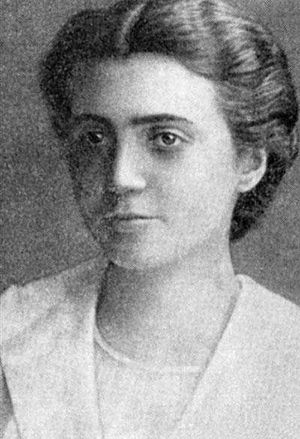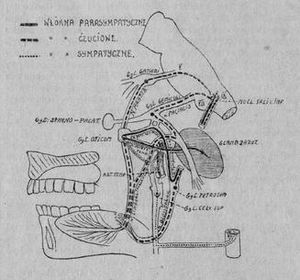Łucja Frey facts for kids
Łucja Frey (born November 3, 1889) was a Polish doctor and a specialist in brain and nerve problems (a neurologist). She is famous for describing a medical condition that was later named after her: Frey's syndrome. Łucja was one of the first women in Europe to become a university-level neurologist. Sadly, she died during the Holocaust in 1942, when she was 53 years old, in the Lwów ghetto.
Contents
Life Story of Łucja Frey
Łucja Frey was born on November 3, 1889, in a city called Lwów. At that time, Lwów was part of the Austro-Hungarian Empire. Her father, Szymon Symcha Frey, was a building contractor, and her mother was Dina Frey. Łucja and her family were Jewish.
Early Education and Studies
From 1896 to 1900, Łucja went to a Christian elementary school. She then finished Franciszek-Józef secondary school in 1907. After high school, she studied mathematics and philosophy at a university. She was a student in the philosophy department from 1907 to 1912.
After five years, she decided to change her path. She moved to Warsaw and began studying medicine.
Medical Training and Career
Łucja studied medicine from 1918 to 1923. She received her medical diploma on June 2, 1923. Her studies were paused for one year because of the Polish–Ukrainian War.
After becoming a doctor, she worked in Warsaw. She was a senior assistant to Professor Kazimierz Orzechowski at his clinic for nerve problems. In late 1928, she moved back to Lwów.
Family Life and Later Years
In Lwów, Łucja married a lawyer named Mordechai (Marek) Gottesman. He was born in 1887. In May 1929, she started working at the neurological clinic in Lwów as a deputy senior consultant. Her daughter, Danuta, was born in 1930.
In September 1939, the Soviet Union took over Lwów. Marek Gottesman was arrested by the NKVD (Soviet secret police). No one knows what happened to him after that.
In 1941, Germany occupied Lwów. Łucja Frey was forced to move to the Lwów Ghetto. She had to work in a clinic there. She was likely killed along with her patients in August 1942. This happened when the ghetto was being cleared out. It is not known if she or any of her close family survived.
There are some unclear details about her life. One family member said Łucja and Marek had a son named Jakub, born in 1919. However, this was most likely Marek Gottesman's son from his first marriage. Jakub also died during the Holocaust.
Why Łucja Frey is Recognized
For a long time, there were only short stories about Łucja Frey's life. These stories often repeated the same few facts. New information about her difficult life was published in a biography by Mirjam Moltrecht.
Sometimes, Łucja Frey's name is left out or spelled wrong in books. People might write "Lucy" or "Lucie" instead of Łucja. Also, her birth and death dates were sometimes confused with another doctor, Maximilian von Frey.
Łucja Frey's Important Works
Łucja Frey's most famous work is about the auriculotemporal nerve syndrome. This condition is now widely known as "Frey's syndrome". Her paper was published in 1923. It first appeared in a Polish medical journal. Later that year, it was published in a well-known French journal.
Understanding Frey's Syndrome
It's important to know that Łucja Frey was not the very first person to describe these symptoms. Many doctors before her had noticed similar things. However, Łucja Frey's article was special. It was the first to give a full understanding of the condition. She looked at the body's anatomy (how the body is built) and pathology (how diseases work). She also explained the exact way the symptoms happened.
Łucja Frey was the first to realize that this syndrome was a problem with two types of nerves. These are the sympathetic and parasympathetic nerves.
Naming the Syndrome
The name "Frey syndrome" was first used in medical writings in 1926 by Henryk Higier. It was also used by Bassoe in 1932. Because other doctors had described similar symptoms earlier, the syndrome is sometimes called by other names. These include Baillarger's syndrome, Frey-Baillarger syndrome, or Dupuy syndrome.
Besides this important work, Łucja Frey wrote other papers. She studied how plant poisons affect the spinal cord. She also wrote about parts of the brain stem, a disease called amyotrophic lateral sclerosis, and problems with joints. Her work also covered growths in the brain, including tumors in the frontal lobe.
See also
 In Spanish: Łucja Frey para niños
In Spanish: Łucja Frey para niños



